Key takeaways:
- Understanding hydration levels, kneading, and proofing techniques are essential for achieving flavorful and well-textured bread.
- Accurate measurement tools, like a kitchen scale, and proper ingredient temperatures significantly impact baking success.
- Common mistakes include neglecting kneading, inaccurate measurements, and slicing bread too early, which compromise the final product.
- Adapting recipes by experimenting with flavors, flours, and sweet elements personalizes the baking experience and enhances enjoyment.
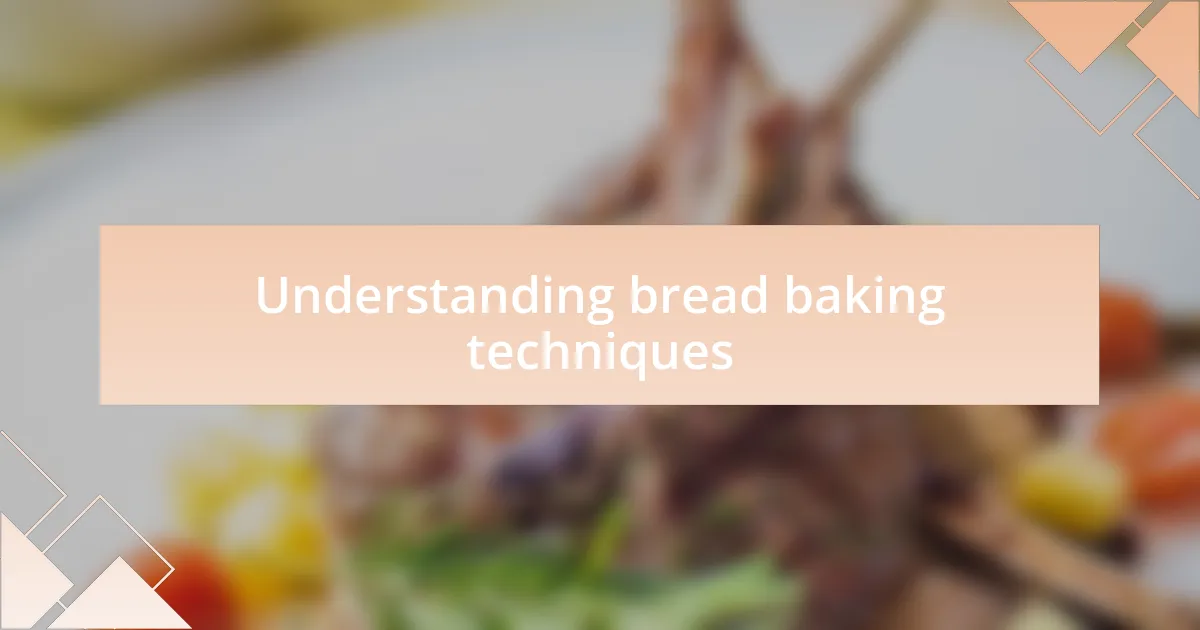
Understanding bread baking techniques
When I first delved into bread baking, I was surprised by how essential it is to understand hydration levels. The amount of water in your dough can drastically change the texture and crumb of the final loaf. I remember my excitement the first time I experimented with hydration; the dough felt alive! Suddenly, I was more in tune with my ingredients, and my breads became so much more flavorful.
Kneading is another technique that took me time to master. Initially, I thought it was just about mixing ingredients well, but it’s so much more than that. Kneading develops gluten, giving the bread structure. I can still recall the satisfaction I felt when my loaf rose perfectly after a good knead. It made me wonder: how could such a simple action produce something so delightful?
Proofing is crucial, and I’ve learned that patience truly pays off. The first time I rushed this step, my bread turned out dense and disappointing. Now, I relish the moments of waiting; it’s almost meditative to see the dough expand, signaling that it’s ready to transform into something beautiful. Have you ever waited for dough to rise, only to be rewarded with a stunning golden crust? It’s those small victories that keep me coming back to the kitchen.
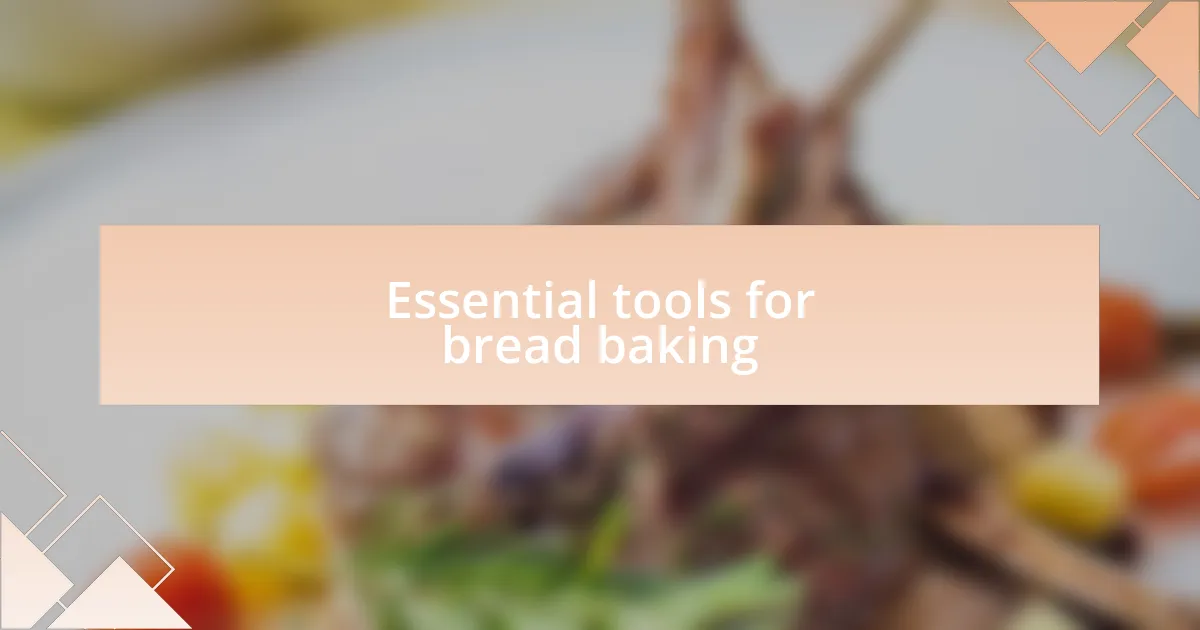
Essential tools for bread baking
When I think about essential tools for bread baking, my trusty kitchen scale always comes to mind. Accurate measurements are vital, especially when it comes to ingredients like flour and water. I vividly remember the first loaf where I didn’t use one—I ended up with a miserable, flat result. Have you ever had a baking experience that felt like a misstep from the start? For me, switching to a scale made baking an entirely new journey.
A sturdy mixing bowl is another must-have in my kitchen. It needs to be large enough to accommodate the dough as it expands during mixing and kneading. My favorite bowl has seen countless bread-making sessions, and its scratches tell a story of resilience and experimentation. Have you ever felt an attachment to a kitchen tool? I’m guessing I’m not alone here!
Lastly, a good-quality bench scraper has become my best friend, especially when it comes to handling sticky dough. It makes transferring dough to different surfaces a breeze, and I can’t tell you how much easier it is to clean up afterward. Each time I use it, I recall moments of triumph when I’ve shaped the perfect loaf with ease. It’s those simple, practical tools that truly make a difference in the joy of baking bread.
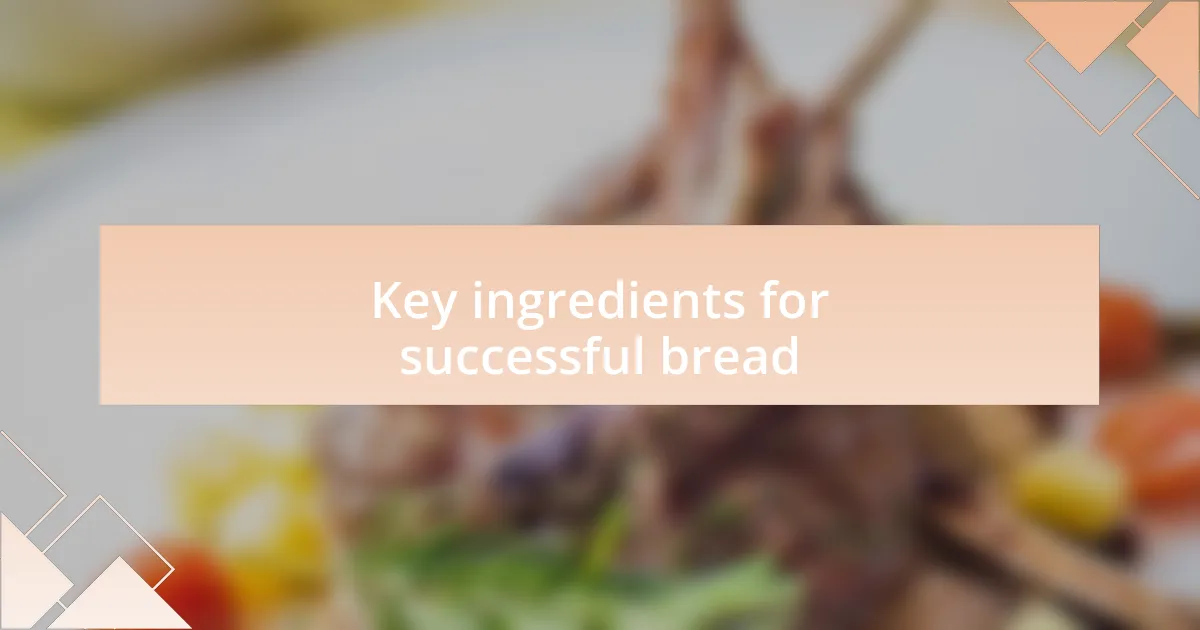
Key ingredients for successful bread
When it comes to the key ingredients for bread, flour is undoubtedly the star of the show. I’ve found that using high-protein bread flour really enhances the structure and chewiness of my loaves. The first time I experimented with different flours, I was amazed—there’s something magical about how the right flour transforms a simple mix into a hearty, delicious bread. Have you noticed a similar difference in your baking?
Water is another critical component, and it can be a game changer. The right temperature can affect yeast activity, so I usually aim for lukewarm water. I’ll never forget my surprise when I mistakenly used cold water once—my dough barely rose! Isn’t it fascinating how a small detail can lead to such a different outcome?
Yeast, whether fresh or instant, brings everything to life. I remember the anticipation I felt while waiting for my first batch of dough to rise. The moment I saw it double in size was pure bliss. Have you ever felt that delightful thrill when your bread starts to rise? It’s those little moments that keep me coming back to the kitchen, eager to create another wholesome loaf.
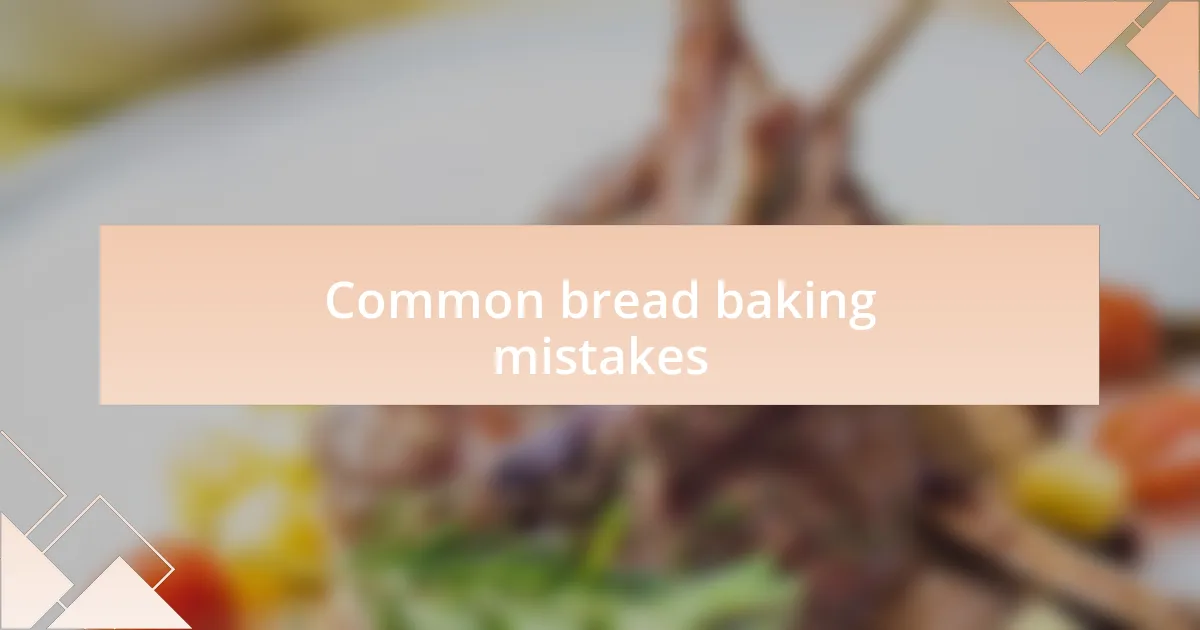
Common bread baking mistakes
It’s easy to overlook the importance of kneading in bread baking, but skipping this step can lead to disappointing results. I learned this the hard way when I rushed my first loaf and ended up with dense bread that barely resembled the fluffy wonders I had admired in bakeries. Have you ever had that sinking feeling when cutting into your bread and realizing it just didn’t rise as you hoped?
Another common mistake is not measuring ingredients accurately. I still remember the time I grabbed a heaping cup of flour without leveling it off. The result? An overly dry dough that didn’t perform well during baking. It’s a simple step that makes a world of difference—where do you find yourself cutting corners in measurements?
Finally, many new bakers overlook the importance of letting the bread rest after baking. I used to slice into my loaves while they were still warm, only to watch the steam escape and the texture change. It’s worth the wait; letting bread cool allows it to finish the cooking process and develop the proper crumb. Patience really does pay off—have you found yourself waiting for those first glorious slices?
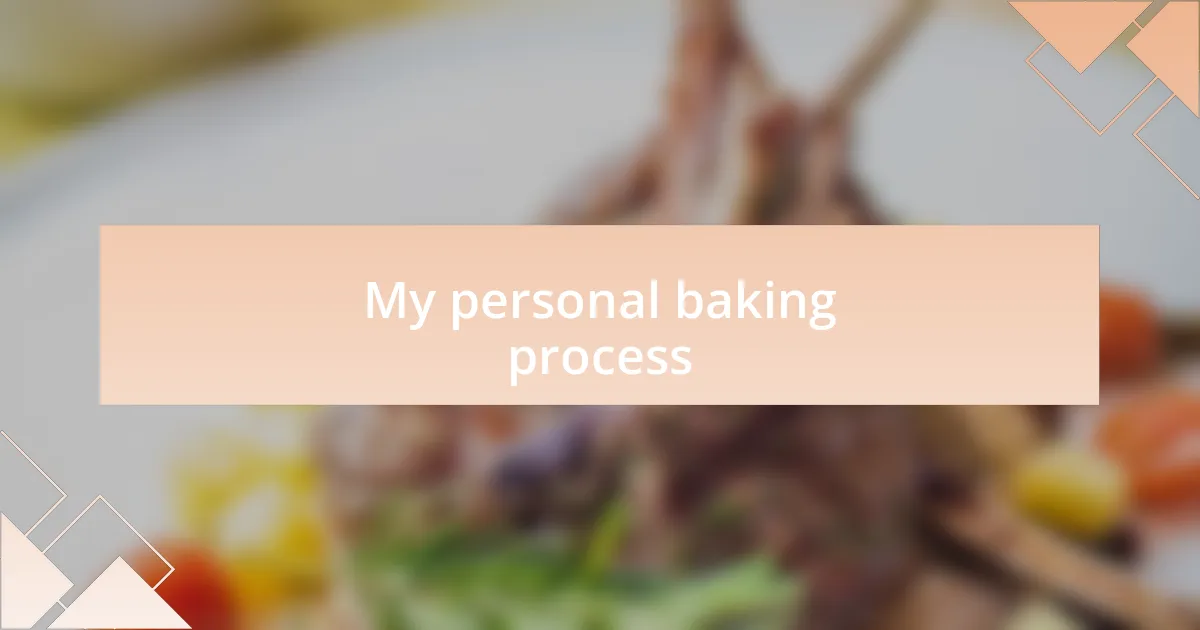
My personal baking process
When I start my baking journey, I always begin with a well-organized space. I can’t tell you how crucial it is to have everything laid out—flour, yeast, salt, and water—so I can focus solely on the process without distractions. Have you ever found yourself scrambling for ingredients midway through? It’s chaos, and I’ve learned that a little preparation goes a long way.
I also pay close attention to the temperature of my water when activating the yeast. In my early days of baking, I used water that was either too hot or too cold, leading to inconsistent results. I vividly recall the frustration when I realized my dough refused to rise as it should. Now, I always test the water’s temperature with a thermometer; it feels reassuring to know I’ve eliminated one variable.
Finally, the shaping process is where I find great joy. I remember the first time I achieved that perfect tension in the dough while shaping my loaves; it felt like magic. The way the loaf comes together under your hands is so satisfying. Do you enjoy that moment too? It’s a labor of love that pays off with a beautifully baked bread that looks and feels just right.
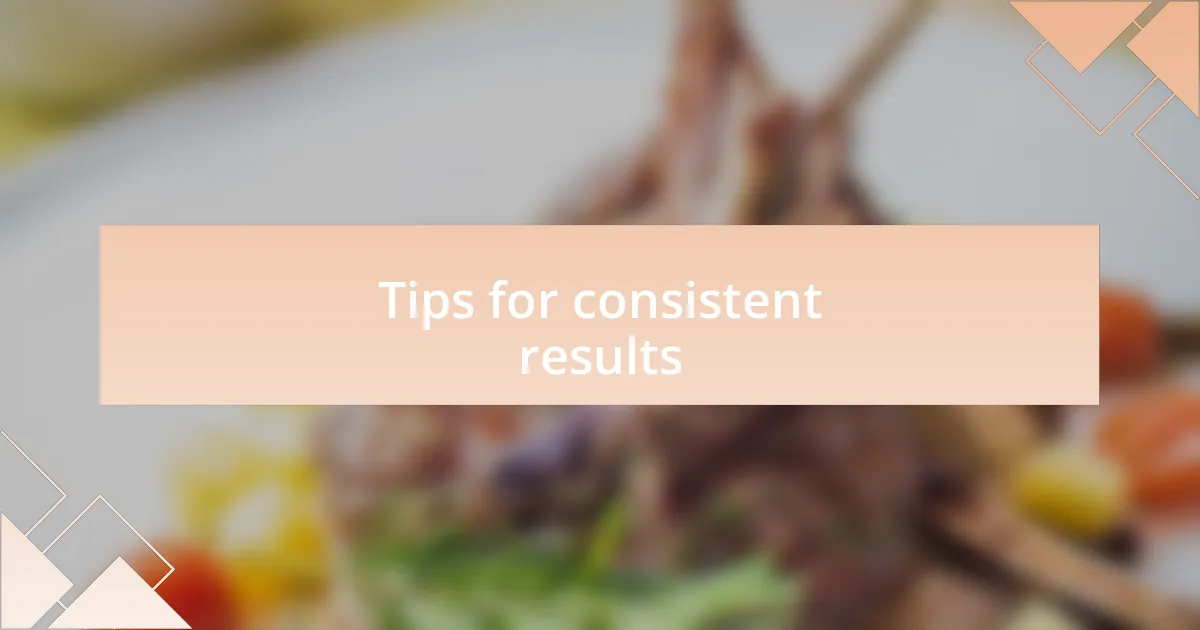
Tips for consistent results
One of my top tips for consistent results is to use a kitchen scale for measuring ingredients. I remember the first time I switched from cups to grams; it was a revelation. Suddenly, my loaves turned out more uniform, and the dough was easier to work with. Have you ever noticed how even slight variations in ingredient quantities can throw off your whole bake? Precision truly makes a difference.
Another key factor is maintaining an even rise. I like to use a proofing box, or simply place my dough in a warm, draft-free spot. There was a time when I thought the kitchen was warm enough, but a chilly draft can hinder yeast activity. Ever checked on your dough only to find it hasn’t puffed up as expected? It’s disheartening, so I learned to create the ideal environment for my yeast to thrive.
Regularly testing your oven’s temperature with an oven thermometer is vital too. I recall a baking session where my bread came out dense and undercooked. It turned out my oven was off by nearly 25 degrees! Have you ever had a similar experience? Ensuring your oven runs true to temperature can save you from that frustrating disappointment and lead to perfect bakes every time.
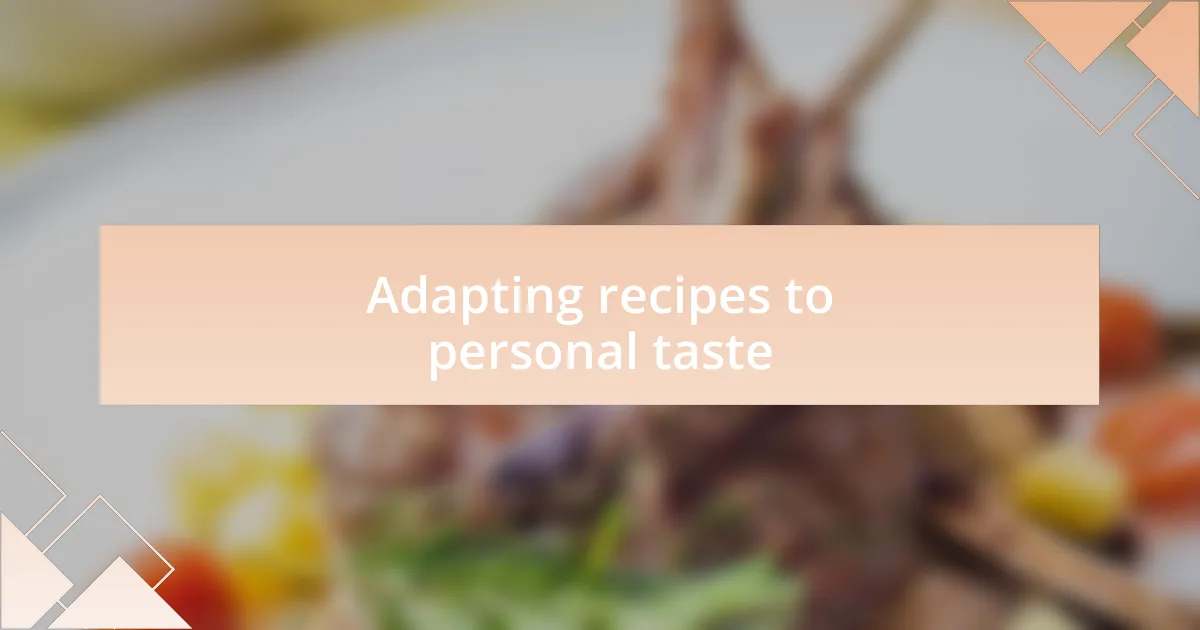
Adapting recipes to personal taste
Adapting recipes to suit my personal taste has been one of the most rewarding aspects of my baking journey. For instance, I always found traditional bread recipes a bit bland, so I started experimenting by adding herbs and spices. The first time I tossed in fresh rosemary, I was taken aback by how that simple addition elevated the flavor profile. Have you ever felt the thrill of discovering an unexpected combination that transforms a dish?
I’ve also played with different types of flours, such as replacing a portion of all-purpose flour with whole wheat or even adding rye. Each variation introduces a new dimension to the bread, creating a unique texture and flavor. I remember my first attempt at using spelt flour; the nutty taste and slight sweetness captivated my senses. What about you? Have you tried using alternative flours, and how did that change your bread?
One of my favorite adaptations has been incorporating sweet elements like honey or maple syrup. I discovered that a hint of sweetness perfectly balances savory ingredients. The first time I slathered a slice of honey oat bread with creamy butter, it was pure bliss. It made me realize that baking is not just about following recipes; it’s about forging connections with flavors and personal preferences. How do you like to make a recipe your own?